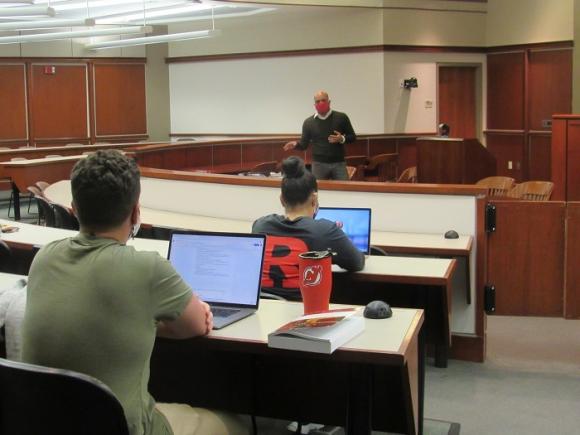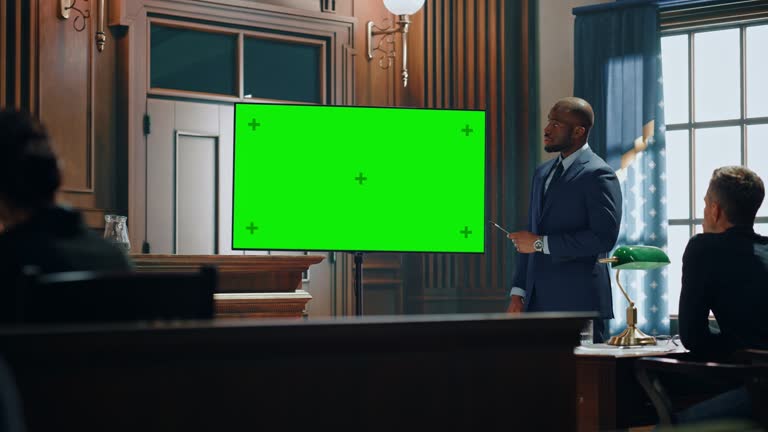Understanding the Art of Trial Presentations: Secret Strategies for Efficient Lawful Arguments
Wiki Article
Browsing the Complexities of Test Presentations: Tips for Seamless Delivery and Engaging Disagreements
In the realm of lawful proceedings, the art of trial discussion stands as an essential factor of success. As attorneys navigate the intricate internet of court room dynamics, the capacity to effortlessly deliver disagreements and proof while mesmerizing the court's interest comes to be critical. The intricacies fundamental in test presentations need a fragile balance of approach, skill, and finesse. By developing methods that guarantee a refined shipment and crafting engaging debates that resonate with the target market, lawyers can considerably improve their advocacy. In a globe where persuasion reigns supreme, grasping the intricacies of test presentations is not simply an alternative but a requirement for those seeking to prevail in the court room.
Recognizing Test Objectives
To successfully navigate a trial, it is crucial to have a clear understanding of the objectives that need to be accomplished. Before tipping into the court, lawful teams have to define their goals and wanted results. These purposes offer as guiding concepts throughout the test, shaping approaches and affecting decision-making procedures.Comprehending test goals entails a detailed evaluation of the instance, lawful precedents, and the client's benefits. Trial Presentations. It requires a careful evaluation of the facts, identifying key concerns, and anticipating potential challenges. By setting particular and measurable objectives, attorneys can tailor their discussions and debates to line up with the wanted results
In addition, a clear grip of test purposes allows lawful teams to prioritize proof, witnesses, and lawful disagreements successfully. It permits the advancement of a meaningful story that resonates with the judge and court, reinforcing the total situation presentation.

Organizing Proof Properly
Having a clear understanding of test goals lays the foundation for arranging evidence successfully in legal procedures. By straightening the discussion of evidence with the desired end results of the trial, lawful teams can enhance their arguments and enhance their persuasiveness.One more trick component in organizing evidence properly is developing a rational circulation. Presenting evidence in a coherent and consecutive manner can help develop an engaging narrative that sustains the lawful debates being made. Additionally, utilizing visual help such as charts, charts, or timelines can further improve the company of evidence and help in making clear intricate connections or series of occasions.
Furthermore, ensuring that all proof presented is permissible and relevant to the situation is vital. Inadmissible or irrelevant proof can diminish the strength of the argument and potentially harm the credibility of the here and now party. A precise evaluation and selection process need to be undertaken to include only the most legitimately sound and impactful proof in the test presentation.
Crafting Convincing Stories
Crafting engaging stories plays an essential role in offering persuasive disagreements during legal proceedings. A well-crafted story has the power to astound the target useful site market, stimulate feelings, and ultimately sway the choice in support of the providing event. When constructing a story for a trial discussion, it is necessary to develop a clear story that highlights bottom lines and links them in a coherent fashion. Begin by detailing the facts of the case in an engaging manner, ensuring that the series of events visit this page is simple to comply with. Present personalities properly, providing history info that assists the audience comprehend their motivations and actions. In addition, incorporating brilliant descriptions and engaging language can bring the story to life, making it much more memorable for the discretionary. By weaving together evidence, testimony, and legal disagreements right into a cohesive and persuasive story, attorneys can properly promote for their clients and boost the chance of a positive result in the courtroom.
Mastering Visual Help
Effective use visual help is crucial to improving the effect and clearness of test discussions. Visual aids, when used tactically, have the power to simplify intricate details, enhance essential factors, and leave a long lasting impact on the discretionary. To grasp visual aids in test presentations, it is crucial to make certain that they are clear, succinct, and relevant to the debates being made.When integrating aesthetic aids, such as charts, pictures, graphs, or timelines, into a trial discussion, it is necessary to keep them visually appealing yet additional hints specialist. The visuals should match the spoken arguments, offering a graph of the info being reviewed without frustrating the audience with unneeded details.
Moreover, experimenting the visual aids ahead of time is imperative to make sure a seamless distribution during the trial. Acquainting oneself with the material, transitions, and timings of each aesthetic aid can assist maintain the flow of the discussion and stop technological glitches that might develop.
Delivering Impactful Closing Disagreements
A compelling closing debate serves as the culmination of a trial discussion, encapsulating the core narrative and persuading the court and court towards a positive choice. Begin by detailing the major debates that support your customer's placement, highlighting why the proof presented throughout the trial supports your narrative.In addition, integrating sob story can better strengthen your closing debate. By humanizing the situation and attaching on a personal degree with the decision-makers, you can evoke compassion and understanding, influencing their understanding of the facts presented. In addition, stating the legal requirements that must be satisfied for a positive judgment can strengthen the credibility of your placement. Eventually, a well-crafted closing debate should leave an enduring impression, engaging the discretionary to rule in your client's support.
Verdict
To conclude, understanding test presentations entails understanding goals, arranging proof, crafting stories, using visual aids, and providing impactful closing debates. By executing these methods efficiently, lawyers can present their situation perfectly and make engaging debates in the court room. It is essential to browse the intricacies of test discussions with accuracy and skill to accomplish success in lawful procedures.By straightening the presentation of evidence with the preferred outcomes of the test, lawful teams can reinforce their disagreements and boost their persuasiveness (Trial Presentations). To grasp visual aids in test presentations, it is crucial to make certain that they are clear, concise, and appropriate to the arguments being made
An engaging closing argument serves as the conclusion of a test presentation, enveloping the core narrative and encouraging the judge and court in the direction of a beneficial decision. Begin by describing the major disagreements that sustain your customer's position, emphasizing why the evidence presented throughout the trial sustains your narrative.In conclusion, understanding test presentations involves recognizing objectives, organizing evidence, crafting narratives, using visual help, and delivering impactful closing disagreements.
Report this wiki page